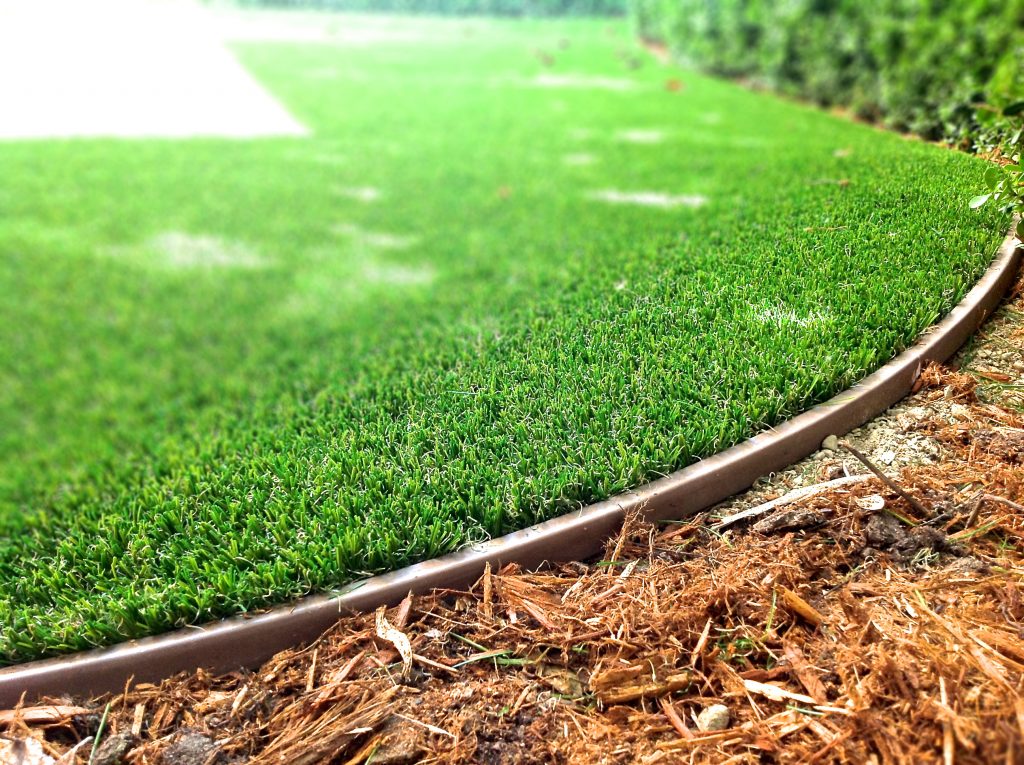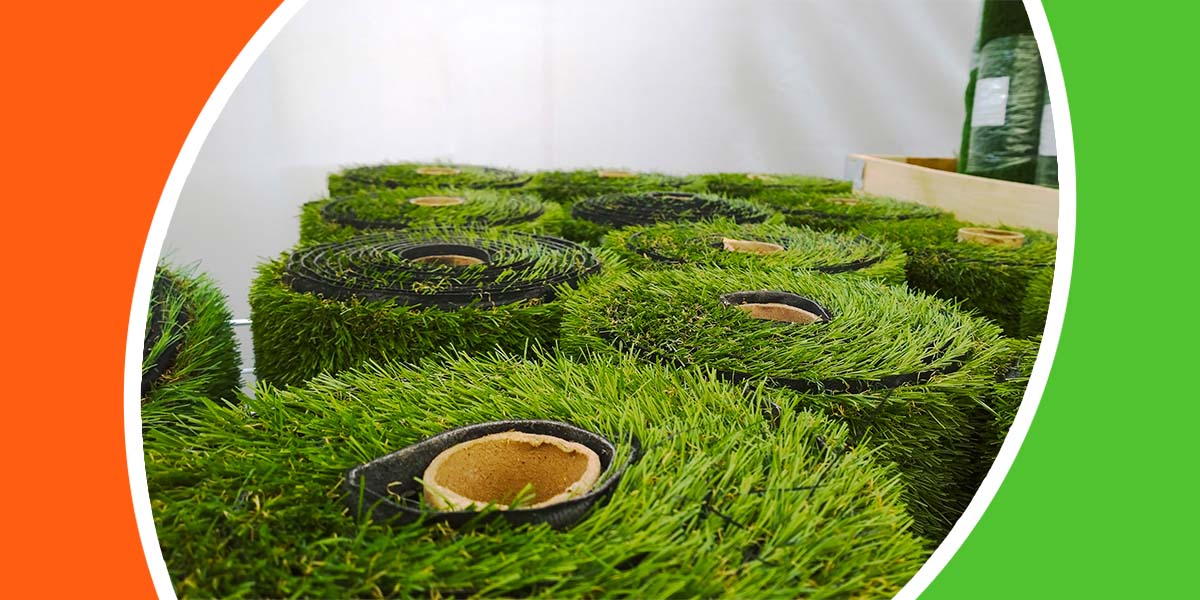Upgrade Your Outdoor Space with Arizona Artificial Turf for a Lush Green Look
Upgrade Your Outdoor Space with Arizona Artificial Turf for a Lush Green Look
Blog Article
Explore the Environmental Perks of Opting for Synthetic Grass Solutions
The fostering of synthetic grass services presents a compelling possibility to address pressing environmental difficulties. By substantially decreasing water use and minimizing the application of dangerous chemicals, these options not just promote sustainable landscape design yet likewise safeguard regional ecological communities. The lower carbon footprint connected with lowered upkeep activities adds to a much more sustainable method to land administration. The effects of these benefits expand beyond mere preservation initiatives, elevating inquiries concerning their long-term effect on habitat conservation and total eco-friendly equilibrium. Checking out these dimensions exposes an intricate interplay worth thinking about.
Water Conservation Advantages
One of the most substantial advantages of synthetic turf is its capacity to conserve water. In contrast, fabricated grass does not need watering, substantially decreasing the overall demand for water resources.
By getting rid of the requirement for routine watering, synthetic grass adds to sustainable landscape practices and assists reduce the environmental effect of excessive water consumption. In addition, the preservation of water encompasses the reduction of drainage, which can lead to soil erosion and river pollution.
Furthermore, the installment of synthetic grass permits communities and homeowners to designate water sources extra effectively, focusing on crucial usages such as alcohol consumption water and agriculture. The change towards synthetic grass not just advertises accountable water usage however likewise aligns with more comprehensive environmental objectives intended at preserving all-natural resources.
As areas increasingly prioritize sustainability, the water conservation advantages of synthetic grass provide a compelling instance for its fostering in industrial and domestic landscape design tasks.
Lowered Chemical Use
The transition to man-made turf substantially reduces the dependence on chemical therapies frequently used in natural grass maintenance. Standard lawn administration usually involves the application of plant foods, chemicals, and herbicides to promote growth and control insects. These chemicals can pose threats to human wellness, neighborhood wild animals, and the setting, adding to soil and water contamination.
On the other hand, synthetic grass eliminates the demand for these unsafe materials. When installed, it calls for minimal upkeep, mainly consisting of regular cleaning and occasional infill replenishment. This reduction in chemical use not only benefits the instant setting however also adds to wider eco-friendly stability. By minimizing the launch of synthetic compounds into the environment, man-made lawn promotes much healthier dirt and water systems.
Additionally, the lack of chemical runoff connected with synthetic grass setups helps shield neighborhood waterways from pollution, sustaining marine life and maintaining biodiversity. Artificial turf companies phoenix. As neighborhoods significantly focus on sustainable methods, opting for fabricated turf presents a practical option that aligns with environmental conservation goals. Through this shift, home owners can delight in rich green rooms without endangering environmental health and wellness, paving the means for a much more sustainable future
Lower Carbon Impact

Furthermore, the installation of synthetic grass can lead to significant water conservation. Natural grass need significant quantities of water for watering, which not just includes in the carbon impact related to water extraction and therapy yet also strains regional water sources. On the other hand, Click Here synthetic grass requires minimal maintenance, needing no watering, thus considerably lowering water use and its connected power costs.
Furthermore, the longevity of synthetic grass contributes to its lower carbon effect. With a lifespan of as much as 15 years or more, the requirement for regular replacements is diminished, causing less waste and lower energy intake in manufacturing and getting rid of standard turf alternatives. On the whole, synthetic turf offers a sustainable option for ecologically aware landscape design.
Habitat Preservation
Habitat preservation is a vital consideration in the argument over landscaping selections, especially when contrasting man-made lawn to natural turf. Natural grass lawns usually call for considerable maintenance, including the usage of herbicides, plant foods, and pesticides, which can negatively affect local ecological communities. These chemicals can leach right into the dirt and rivers, damaging indigenous plants and fauna and interfering with regional habitats.
Man-made grass removes the demand for damaging chemicals, thus shielding nearby wild animals and preserving the honesty of surrounding communities. The installation of artificial turf can lead to the conversion of previous lawn areas into more biodiverse landscapes, such as pollinator yards or native plant locations, which can support neighborhood wild animals.
Eventually, the transition to synthetic grass not just saves water and reduces upkeep efforts however also promotes an extra harmonious relationship between human activities and the natural environment, promoting environment conservation while doing so.
Long-Term Sustainability
Long-term sustainability is a crucial consider assessing the advantages of artificial lawn over typical lawn yards. One of the most significant advantages of synthetic grass is its sturdiness; it can last approximately 15-20 years with minimal upkeep, whereas all-natural grass calls for constant reseeding and substitute. This long life reduces the demand for consistent resources, such as water, plant foods, and chemicals, which are essential for maintaining a healthy grass yard.
Furthermore, synthetic grass adds to a reduction in carbon exhausts related to grass care devices. Standard yards usually need gas-powered lawn mowers, leaners, and blowers, all of which contribute to air contamination. Arizona artificial turf. On the other hand, synthetic grass removes the need for such equipment, promoting a cleaner environment
Moreover, the manufacturing of artificial grass increasingly utilizes recycled products, improving its sustainability account. As suppliers embrace environmentally friendly methods, the ecological impact of synthetic grass proceeds to reduce.

Verdict
The fostering of synthetic grass options provides significant ecological advantages, consisting of considerable water preservation, decreased dependence on dangerous chemicals, and a reduced carbon their website footprint. Fabricated lawn help in protecting natural habitats by decreasing land disturbance and promoting long-lasting sustainability through the use of long lasting products. Collectively, these aspects highlight the potential of synthetic grass to contribute positively to ecological health and wellness and use a viable option to standard landscaping methods in a progressively resource-conscious world.
In comparison, man-made lawn click for source does not need watering, significantly lowering the general need for water resources. By lessening the release of artificial compounds right into the ecosystem, man-made grass promotes healthier dirt and water systems.
Additionally, the installment of synthetic lawn can result in significant water conservation. In contrast, fabricated turf requires marginal maintenance, calling for no watering, consequently substantially reducing water use and its connected power expenses.

Report this page